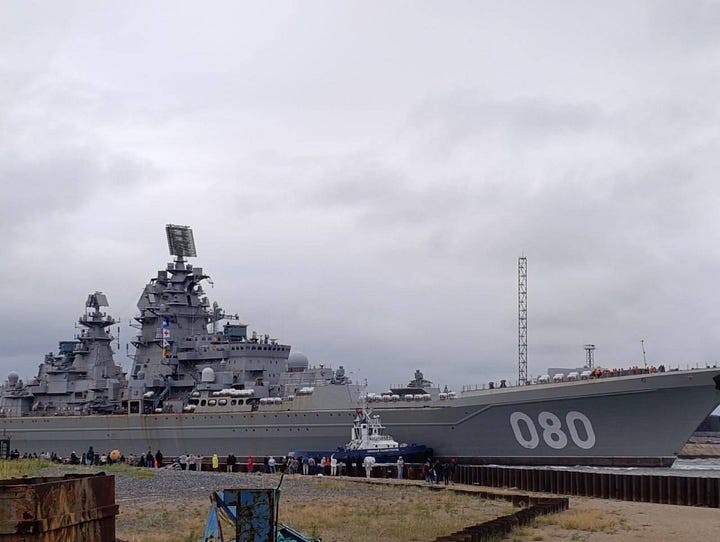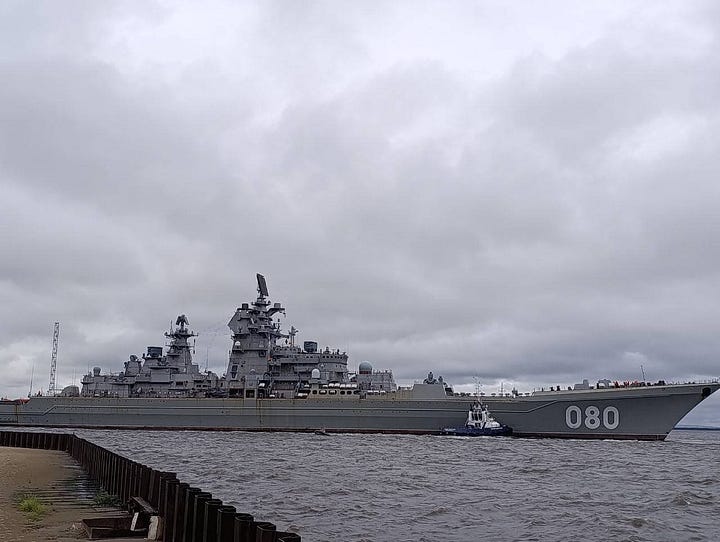Long-Sidelined Russian Nuclear-Powered Cruiser Admiral Nakhimov Begins Sea Trials Following Protracted Modernization
🇷🇺
Note: The following text was originally posted on my X/Twitter account.
Russia's "latest" nuclear-powered Kirov-class cruiser, the Soviet-built Admiral Nakhimov (ex-Kalinin), is undergoing sea trials following the activation of its nuclear reactor in December 2024. The long-delayed modernization of the Admiral Nakhimov will, once completed, allow the Russian Navy to retire its (Soviet-built) sistership, the Pyotr Velikiy (ex-Yuri Andropov) and undertake a like-for-like replacement of the Russian Northern Fleet's long-time flagship. The two other Kirov-class cruisers, Admiral Ushakov (ex-Kirov) and Admiral Lazarev (ex-Frunze), were built much earlier and have been scrapped. The Russian Navy is unlikely to subject the currently operational Pyotr Veliky to a comparable upgrade and life extension effort, given the cost and complexity of such efforts with the Admiral Nakhimov and the fast diminishing utility of even an upgraded Kirov-class beyond a high-profile Potemkin-style symbol of Russian naval power.


Its immense size and the inherent implications of nuclear propulsion notwithstanding, the Admiral Nakhimov is not a very competitive design even in its extensively upgraded form. The Russian Navy would likely prefer to have a new-build high-end warship in the vein of the American Arleigh Burke-class or the Chinese Type 055-class but Russia's naval shipyards and the relevant areas of Russian military industry are not up to the challenge—Russia has been struggling for two decades to build much smaller, less complex, and less expensive frigates—and Russia lacks the resources to realistically pursue such naval construction for the foreseeable future. The Russia-Ukraine War and its attendant effects have only exacerbated the longstanding limitations of Russia's post-Soviet military industry in this area, as with so many others.
Following its eventual commissioning, the nuclear-powered Admiral Nakhimov will likely spearhead what hitherto sporadic Russian efforts in the area of naval diplomacy. Notwithstanding the long-delayed ongoing construction of new replenishment ships, the Russian Navy—which is in practice composed of four geographically separate fleets plus one geographically separate flotilla—has limited reach worldwide. While Russia has little to gain from undertaking expensive and logistically straining sustained naval deployments far from its extensive maritime frontier, Russia stands to benefit from concerted efforts in the area of naval diplomacy. The nuclear-powered Admiral Nakhimov—which has functionally unlimited range provided that there are sufficient provisions available for its large crew—is likely to take over from its sistership Pyotr Veliky in this military unimportant but diplomatically important role. As large nuclear-powered heavy cruisers, the Kirov-class have a very imposing presence and fit the mould of the Kremlin's conception of a muscular display of Russian military power, irrespective of the strikingly weak foundations propping up this inherited Soviet-built edifice.

